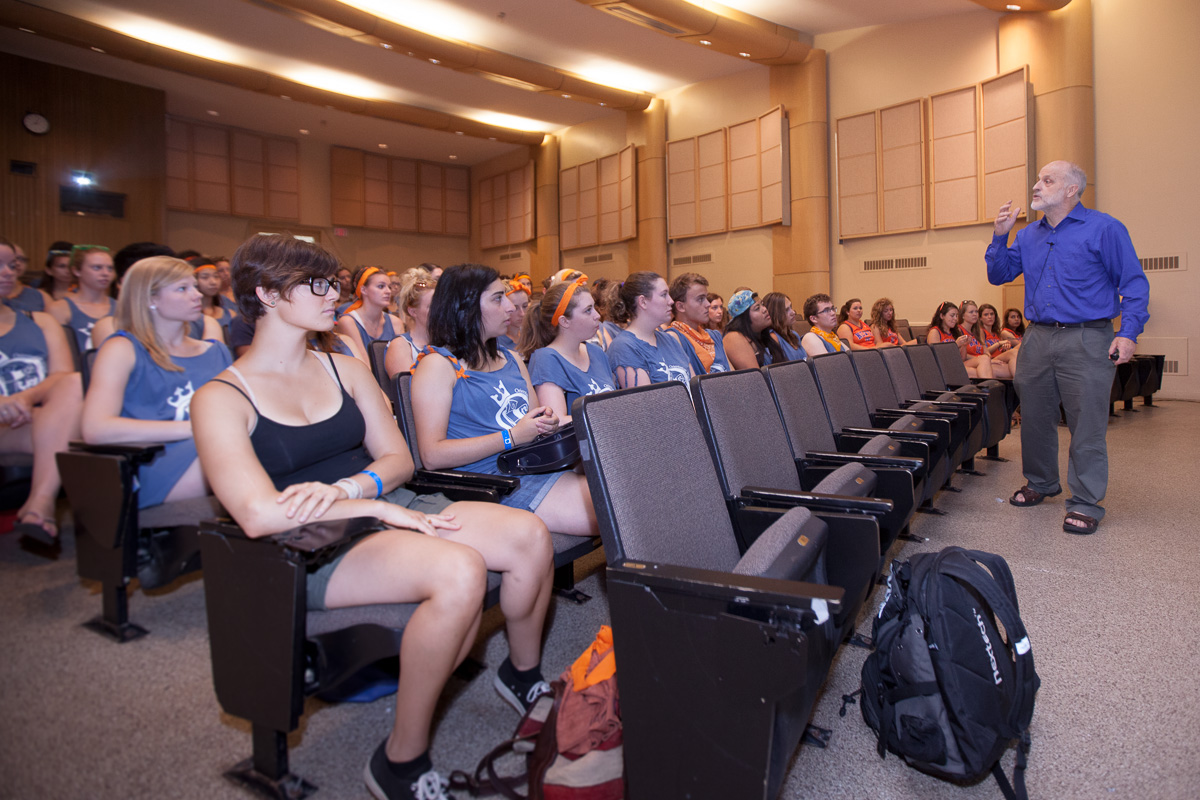Training program aims at reducing the stigma of mental illness
August 29, 2013
Share
By Rosie Hales, Communications Officer
All residence dons and orientation leaders are participating in an evidence-based training program aimed at reducing the stigma that surrounds mental illness – the first program of its kind for post-secondary students.
The training is the result of a collaboration between Health, Counseling and Disability Services (HCDS), Queen’s professor Heather Stuart and Opening Minds, an organization within the Mental Health Commission of Canada.
 HCDS Director Mike Condra leads a mental health anti-stigma training session for this year's orientation leaders.
HCDS Director Mike Condra leads a mental health anti-stigma training session for this year's orientation leaders.The training program is focused on lived experience stories from young adults who have been diagnosed with mental illness. The hope is to share these practises with other post-secondary institutions to reduce the stigma that surrounds mental illness on campus.
“We know that the stigma surrounding mental illness is one of the main barriers as to why students who are in distress, or not doing well mentally, might not reach out and get help,” says Beth Doxsee, Peer Health Outreach Coordinator at HCDS. “We wanted to focus on stigma and try and change the culture around mental health.”
It was the action-focused research presented at a conference in the summer of 2012 that provided Ms. Doxsee with some ideas about how to reduce stigma around mental illness.
Dr. Stuart, the Bell Canada Mental Health and Anti-Stigma Research Chair in the Faculty of Health Sciences , worked with HCDS to develop the training program and put the team in touch with Opening Minds, an organization focused on reducing stigma.
Since then, the program has been given ethics approval to evaluate its impact. A key component to this training are the students who have had a lived experience with mental illness and are willing to share their story.
It’s hoped that the program will expand from its starting point at Queen’s.
“It would be great if other schools could start applying it in their settings as well,” Ms. Doxsee said.